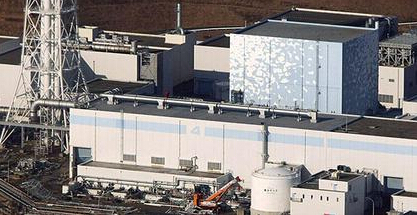[China Instrument Network Instrument R&D] On December 7, SEPA technology project “Research on the Development of Nuclear Power Meter Detection Device and Research on Traceable Source System†passed the acceptance test. This project was undertaken by Shandong Metrology Institute. The expert group consists of 9 experts including Shandong University, China Institute of Metrology, and China Institute of Test and Ionization Radiation.
(Photos from the Internet, invading)
The expert group listened to the work report of the project team, reviewed the relevant technical data, and watched a live demonstration. After questioning and discussion, the expert group unanimously believed that the submitted acceptance data was complete, complete and standardized, and met the project acceptance requirements. The project met the national metrological verification. The requirements of the test methods, technical requirements, test equipment and environmental conditions of the procedures, and the source and expenditure of the project funds are standardized and reasonable, and they agree to pass the acceptance check.
Nuclear power meters are closely related to safety protection, health care and environmental monitoring. It is of great importance to ensure the accuracy of their values. If the amount is inaccurate, personal dose assessment and radiation safety supervision will be seriously affected, which may lead to nuclear accidents, threaten the health and safety of workers and even the nearby residents, and cause major public safety incidents. However, the current domestic calibration of ionizing radiation protection devices, dosimeters, and other nuclear power meters has not been able to fully develop, especially in Shandong Province, this area is blank and cannot fully meet various energy ranges and dose rate ranges. The instrument inspection and calibration work, the nuclear power meter detection capability needs to be improved, and the value transfer and traceability system needs to be improved.
The completed SEPA science and technology project “Research on nuclear power meter detection device and research on traceable traceability system†established three sets of ionizing radiation dosimetry standards, and achieved different dose rates through different specifications of attenuators and precise distance adjustment positioning. The complete coverage of nuclear power meters is of great significance for the measurement of environmental monitoring, radiation protection, and treatment levels, as well as the transmission of measured values ​​and the traceability of measurement values.
(Original title: The S&T Project of the State Administration of Technology “Research on the Development of Nuclear Power Meter Detection Devices and Research on Traceability System†Passed Acceptance)
Sodium Hydrosulfite
Sodium hydrosulfite is widely used in the textile industry for reducing dyeing, reducing cleaning, printing and decoloring, and for bleaching silk, wool, nylon and other fabrics. Because it does not contain heavy metals, the bleached fabric has bright color and is not easy to fade. In terms of various substances, sodium silicate can also be used for food bleaching, such as gelatin, sucrose, honey, etc., soap, animal (vegetable) oil, bamboo, porcelain clay, etc. Sodium hydroxide can also be used in organic synthesis, such as reducing agent or bleaching agent in the production of dyes and medicines. It is the most suitable bleaching agent for wood pulp and papermaking. Moreover, many heavy metal ions such as Pb2+ and Bi3+ can be reduced to metals in water treatment and pollution control, and it can also be used to preserve food and fruits. However, due to the many dangers of sosso, many of its uses tend to be replaced by thiourea dioxide, which is safer and easier to store and transport.
Sodium Hydrosulfite,Sodium Hydrosulfite 88%, Sodium Hydrosulfite 90%
HENAN JINHE INDUSTRY CO.,LTD , https://www.hntitaniumdioxide.com
